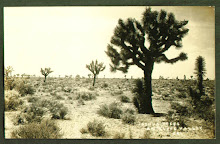https://www.facebook.com/theDNAanalyst/
Thursday, July 18, 2019
Friday, October 19, 2018
Friday, February 11, 2011
NEW WEBSITE
The Joshua Journal is now online!!!! I am back in business!!!!
http://www.thejoshujournal.org
http://www.thejoshujournal.org
Sunday, July 12, 2009
PATRONYMICS
What does PATRONYMIC mean? Patronymic means a name that is acquired from a person’s father’s first name. A name that is based on the name of a person’s mother is called matronymic. Each of these is a way of conveying one’s lineage. In many countries, the use of patrynomics predates the use of surnames. While some cultures use patrynomics, others use surnames, and some cultures, like Russia, use both a patrynomic and a surname in their naming systems. A patronymic name is often formed by adding a prefix or suffix to a name. Some suffix examples would be these German place names: -burg (castle) and -berg (mountain). Some names were derived from occupations, location of your land, or where you originated from. Another example would be my DIRKSEN surname from Moordorf, Germany. Frerich Dirk settled in Moordorf by 1782. Then in the early 1800’s, settlers in the area took on surnames. Frerich Dirk’s line took the Dirk surname because he was the first settler in Moordorf and added ~sen to the name, which means—family of. So, we have Dirksen, the family of Dirk. I find it quite exciting piecing together the puzzle of patronymics!
Written and Researched by Karla Archuleta
Written and Researched by Karla Archuleta
WHERE DID THE TUMBLEWEED COME FROM?
The tumbleweed, also known as the Russian Thistle, came to the prairies of the United States in the late 1870’s. It found its way here in grains and seeds imported from Russia. The Mennonites imported the tumbleweed in flax seed in 1877 to South Dakota. The tumbleweed first sprouted in Bon Homme County, South Dakota. Some people believe the Mennonites brought the tumbleweed deliberately, due to the discriminating way they had been treated. The eastern half of South Dakota was heavily infested by 1891, causing farmers to abandon their land. By 1895, the tumbleweed had reached New Mexico, along with 15 other states, and parts of Canada. The first tumbleweed found in California was in 1895 near the railroad tracks in Lancaster, Los Angeles County, California.
Another tumble weed was found when the Puritans brought mullein seed to Massachusetts in the early 1600’s. The mullein is an ancient weed, and plays an interesting role in history. When the pioneers started to head westward, the mullein did also. You can track the pioneers’ movements by the mullein and other immigrant weeds.
These are just 2 of the tumbleweeds that have made it to North America, but they seem to have played a more important role in our history.
SOUCES: http://www.wssa.net/photo&info/weedstoday_info/several9.htm , http://www.prairietumbleweedfarm.com/history.htm , http://www.killerplants.com/plants-that-changed-history/20020702.asp
Written and Researched By Karla Archuleta
Another tumble weed was found when the Puritans brought mullein seed to Massachusetts in the early 1600’s. The mullein is an ancient weed, and plays an interesting role in history. When the pioneers started to head westward, the mullein did also. You can track the pioneers’ movements by the mullein and other immigrant weeds.
These are just 2 of the tumbleweeds that have made it to North America, but they seem to have played a more important role in our history.
SOUCES: http://www.wssa.net/photo&
Written and Researched By Karla Archuleta
Subscribe to:
Posts (Atom)

